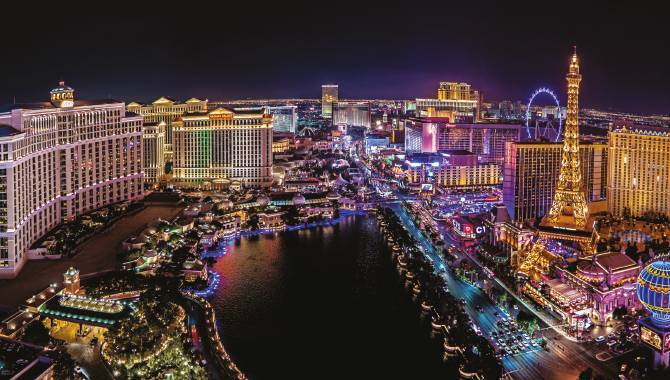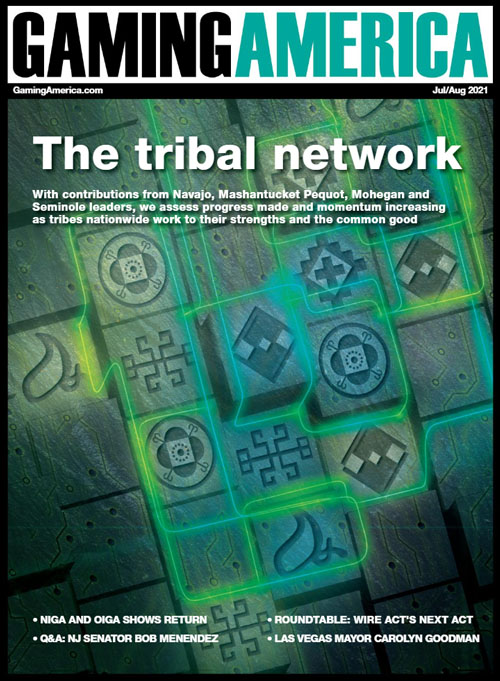
In offering this thesis, it’s important to understand the context to my thinking.
I am not from the gaming industry; I started developing residential real estate development over 20 years ago to commercial real estate finance and asset management – that is, programming shopping malls and retail areas. I collected a BA in social sciences, and MSc in real estate finance and an MBA with a focus on strategy. I am qualified as a finance and investment surveyor and was elevated to the designation of Fellow of The Royal Institution of Charted Surveyors. My MBA thesis was on the topic of strategic positioning of Las Vegas Casino Resorts and in 2015 I moved to Las Vegas to advise casino owners and those seeking market entry.
I have held visiting faculty positions at The University College of Estate Management, lecturing on property performance measurement and asset management; and at Cass Business School (due to be renamed Bayes Business School) at City, University of London, on strategic marketing, which involves a field trip to study Las Vegas casinos. With over two decades of experience, I have collected an understanding in what works – and what doesn’t.
The attraction to casinos was not about gambling. Rather, my journey started with understanding people, then real estate, then marketing and then applying these to this particular industry, as it is a combination of all of these that’s required to develop a strategy for a successful business.
Congratulations…You bought a casino!
You bought a casino and have joined an exclusive membership of casino owners. In Las Vegas casino transactions are rare and in recent years only a handful of new owners entered the market, predominantly Downtown, with established Strip operators consolidating. However, whether Covid related or a change in the business model, there seems to be a flurry of new market entrants heading to town.
The big test to these new entrants is how to build a sustainable business in this hyper-competitive market.
Recent and proposed new owners have been announced for The Rio, The Palms, The Sahara, The Venetian, The Tropicana, The Hard Rock (already rebranded as Virgin) and ongoing rumors of the Seminole Tribe seeking an entry for The Hard Rock brand. Plus, the opening of Resorts World sees Asian giants Genting coming to Nevada. There has not been such a level of transaction activity in Las Vegas since the 1990s.
New entrants, with new capital, ideas and customers are a positive move for the industry, but the tough reality is that not all will be successful and a lot of money will be wasted in this journey.
As a professional and commentator, it becomes clear almost immediately who the operators are that have given considerable thought to strategy – and those that have not – and it is painful to watch those errors take place in real time. Repeatedly.
I am prepared to share my insights to the new market entrants and those that are considering investing in this most curious of asset class.
A casino buyer’s guide
If you build it, they will come. For a while.
Too often the second part is forgotten. Unless there is a clear customer strategy in place at the first point of strategic development, all else is irrelevant. Your casino will undoubtedly fail.
Among the best customer strategies are to find a segment where there is unmet demand, and drive better loyalty from that customer than the competition.
Let us look at some of the most successful openings of recent years and this becomes obvious.
Caesars Entertainment redeveloped its recently acquired Imperial Palace to The Quad, and now The Linq. There was a clear customer in mind. Caesars, with their data-driven approach to marketing, had observed a shifting in demographics of Las Vegas visitors to a younger customer. Understanding that many of these customers didn’t have the disposable income of their parents, yet sought to come to Las Vegas for an escape with like-minded people, targeted the renovations to this customer.
The misstep naming the property as The Quad was to evoke a college campus, but The Linq, originally the name for the promenade built for Gen X and Y customers, gained such resonance with the target customer, it prompted a rename in short order. The Linq promenade, with selected brands and targeted offering, is an overwhelming success and the hotel has seen sustained rise in ADRs proving a solid return on investment.
In the early 2000s both the Hard Rock and The Palms had proved that there was a demand, albeit off-Strip, for a younger, urban, sophisticated customer. When the Cosmopolitan opened, it took that customer and amplified the offering. There was a demand for a sophisticated, urban resort with a great nightclub, cutting edge live music and on-point food and beverage programming. The customers came, and over a 10-year period, non-gamers grew into gamers, driving revenues and leading the way for a new generation of visitors to Las Vegas.
Perhaps the leading operator of his generation, Derek Stevens has his hand in transforming three properties all in different ways. First was the Golden Gate, which was positioned for those who had nostalgia for Downtown Las Vegas. Second, The D, inspired by Michigander and mid-West customers, bringing proven and Detroit brand recognition to Las Vegas, such as American Coney Island Chili Dogs and Joe Vicari’s Andiamo Steakhouse. The gift shop even sells local Detroit sodas and candies. More recently with Circa, Stevens has understood the desire for authenticity, embracing the heritage of Downtown and realizing customer appreciation for sport, fusing these in Circa.
Look at the most successful resorts and all have a clear customer in mind. Bellagio, Wynn, Caesars Palace, Circus Circus, Excalibur were all built for a clear customer segment.
Look at the underperforming resorts. What customer groups are they aimed to service?
If you don’t have a clear vision for who your customers are, and try to meet their needs better than others, then why would anybody choose to spend their time at your property?
Competitor Strategy
Concurrent with your customer strategy, any new market entrant must be aware of the competition. If you try to compete with an established operator that is in a similar position in the market, you have to do it better, or at least drive loyalty with that customer.
In a highly competitive environment, where many aspects of business activity are highly replicable, there is a great prize for innovation. But by failing to understand and copy aspects that work, there are potential missed opportunities.
As the Venetian innovated with a large convention-centric offering, today Las Vegas hosts over 22,000 meetings and conventions and holds around 14 million square feet of meetings and convention space, more than any other city in the world. Pre-pandemic, Las Vegas drew over seven million business travelers and is an established business destination.
Likewise, Las Vegas has become the premier live entertainment destination in the world. With over 20 concert and sports venues, with capacity for over 200,000 seated customers. Any new resort will have to think seriously how to program their entertainment in alignment with their customers.
Both eyes on the competition and understanding the market is of vital importance if your new shiny casino is able to compete.
Developing internal capabilities
Further to the positions as outlined, for a successful casino opening, the resort needs to develop or acquire the key elements required for success. These may be hiring people, physically developing infrastructure or bringing in third parties as appropriate.
The most important of these capabilities is developing a culture that aligns with the overall customer strategy, and the case studies in this are the resorts developed by Steve Wynn and his team, especially in large scale operating businesses.
All aspects of training, hiring, presentation and leadership must reflect the customer positioning. Likewise, if entertainments required, then the appropriate investment in people and place making is required. If slot players are the target, then a transactional loyalty platform is vital. Whatever the target customer and business objectives are, there needs to be an internal capability to deliver.
In his book Super Casino, Pete Earley recalls the early days of The Luxor, which was developed to compete with The Mirage. Earley reminisces of the concern to Luxor owners of a high-limit player on a lucky streak. Where Wynn had developed a culture to attract a portfolio of high rollers and an infrastructure to manage volatility, Luxor owners Bennett and Pennington successfully dominated the market of low stakes players in Excalibur and Circus Circus.
The same goes with restaurants. Do not underestimate the value of a successful food and beverage program in gaining competitive advantage, aligning this key aspect to the target customer. Customers have to eat, so make sure they don’t leave your property to do so.
I have lost count of great restaurants that have failed or underperformed because their offering was not aligned with their casino or hotel customers. If you don’t develop the internal capabilities to deliver on the promise, or outsource them accordingly, then your casino will fail.
Now what?
Las Vegas prepares for new owners. Some will be successful bringing new ideas and customers to the market.
However, we are still an industry that prizes operations above strategy. That is a mistake and in time will lead to business failure. Why? Because efficiencies don’t drive customers to your property.
Bring the elements outlined together, add a strategic layer of how to do it and you will have a successful casino resort. Everything else is a tactical marketing tool, including the name, design and branding pursuant to meeting the strategic aims.
Having read this column and absorbed its key points, you will be in a position to analyze both new and existing properties in the market. Watch carefully and be vigilent. You will see how successful properties capture customer loyalty because they are positioned to do so, and when some owners or operators screw it up, the reasons will now be obvious.

